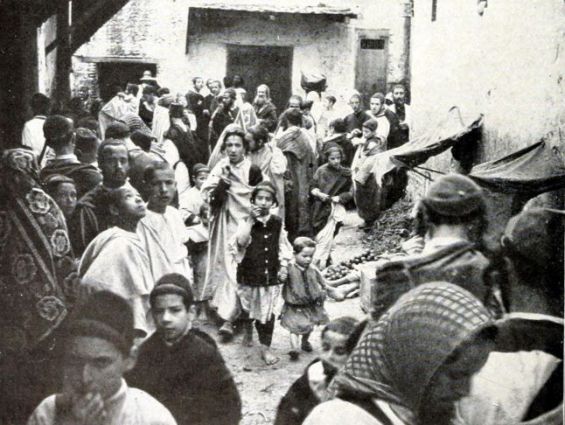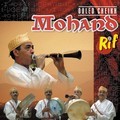Mahia is a Moroccan alcoholic beverage distillated from locally picked fruits like figs, dates and grapes, and flavored with aniseed. The tradition of making this drink speaks volumes of the country’s artisanal expertise, identity and religion.
In modern-day Morocco, the beverage is industrialized under several brand names, distillated and filled in factories authorized by the State. But the practice of Mahia making has always been done at home, behind closed doors or behind the walls of the Jewish quarter «Mellah».
For centuries, Mahia in Morocco has been a Jewish beverage, made by Jewish artisans, initially for the Jewish community. Ma-hia, which stands in Arabic for the «water of life», was almost exclusively meant to be consumed and enjoyed by Moroccan Jews. Many of them have mastered the skills of producing it from the comfort of their homes, with some even preserving their secret family recipes.
The equivilant of Mahia, would be boukha in Tunisia, arak in the Middle East, pastis or eau-de-vie in France. In Morocco, it is not just a drink.
«Mahia is deeply inscribed in Jewish memory and documentation of Jewish life», said Oren Kosansky professor of Anthropology. In a May 2019 lecture on Mahia and its «history of a Moroccan Jewish Commodity», he explains that the alcoholic drink has been «produced by Jewish artisans, circulated through Jewish networks, celebrated in Jewish cultural rituals, documented in colonial ethnography, called up in Jewish memoir, and memorated in Jewish Museums».
Mahia and Hillula
Within the Moroccan Jewish community, the liquor is linked to special occasions, religious, spiritual, and sometimes ceremonial ones. One of them is Hillula, a Jewish pilgrimage that consists of visiting and celebrating venerated saints around the country.
«Mahia was, and remains, closely associated with those Jewish ritual events, known as hillulot (Hillula) that are centered around deceased Jewish holy men, most often exemplary rabbis and kabbalists commonly referred to as saddiqim», wrote Kosansky in his «Mahia and the representation of Morocco's Jewish entailments», (Langues et Littératures, 19, 163-178).
Outside of Mellah, which «represented the quintessential space of Mahia production», Hilloullas, or Jewish pilgrimage, was «understood to be one of the significant contexts of the distillation's consumption», the ethnographer said.
The relationship between Mahia and Hillula was mentioned and commented on in colonial ethnography, signals Kosansky, citing accounts that viewed Mahia as this «facet of the pilgrimage experience».
«It is difficult to render an account of the kind of frenzy that one sees at the time of the major pilgrimages, with their bacchic disorder and heavy drinking. Do these gestures attest to a woeful inability to appeal to God except with carnal exaltation?», reads one of these colonial accounts.
But as the Western voices did not appreciate Mahia consumption during Hillulas, the Jewish community held a more symbolic meaning of the practice. In fact, the Jews viewed Mahia as «not an intoxicant to be consumed on-site (during Hillulasas) but rather as a votive item that functions pilgrimage practices at shrines», the professor stressed.
In fact, Mahia is brought to the shrine to absorb the saint’s powers. When the pilgrimage is over, the drink is then brought back home for consumption for those who could not make the pilgrimage. «Mahia, in these cases is less a vehicle for intoxicating alcohol and more a vehicle for carrying the power of the saint», he explained.
The particularity of Mahia is not only related to its relationship with Jewish rituals but also to the nature and specificities of the life of Jews in Morocco. While Jews lived in enclosed quarters within the walls of the Medina, so was their Mahia. Before it was massmarketed, for both the Jews and Muslims alike, Mahia was a production specific to the Mellah.
Mahia «is typically a product, distilled in homes using traditional methods», the professor indicates, citing other «variety of trades — silverwork, goldwork, embroidery, and so forth — that have long been associated with Moroccan Jews».
A beverage made within Mellah walls
What made Mahia unique is that its «artisanal production is situated not in the public sphere of the market but in the private sphere of domestic space, not in the workshop but in the home».
Although it is embedded as a Jewish specialty, Jews in Morocco are not the only consumers of the beverage. The drink has long also attracted Muslims, to whom it was forbidden. And although the tradition of Mahia production started in Mellah, it expanded outside of it with clandestine producers who sold it in the black market for Muslims, keeping the artesanal aspect of it.
While commercially produced versions of Mahia have become commonplace and are often shunned by the Jewish community, handcrafted Mahia retains its significance as a symbol of genuine «cultural production and social connection».
Interestingly, the secretive nature of artesanal Mahia production also holds a particular value within Jewish communities. For instance, the identities of individuals who make Mahia for personal use are rarely openly shared.
While the illegality of home-distilling Mahia undoubtedly contributes to its secrecy, there's more to it than just evading law enforcement.
«We should also bear in mind that secrecy itself represents a value and not just as a strategy of hiding from the law. We should not, therefore, view clandestine inahia production as being only a way of enjoying some small escape from the ever-extending grip of the state, though this dynamic is not entirely absent either».
But making and consuming Mahia clandestinely is illegal for a good reason, as the beverage, if not well made, could lead to fatal intoxication. Over the years, the practice has claimed the lives of many, most recently 8 people were killed and 81 others were severely poisoned after drinking an improper, bootleg Mahia.





 chargement...
chargement...













